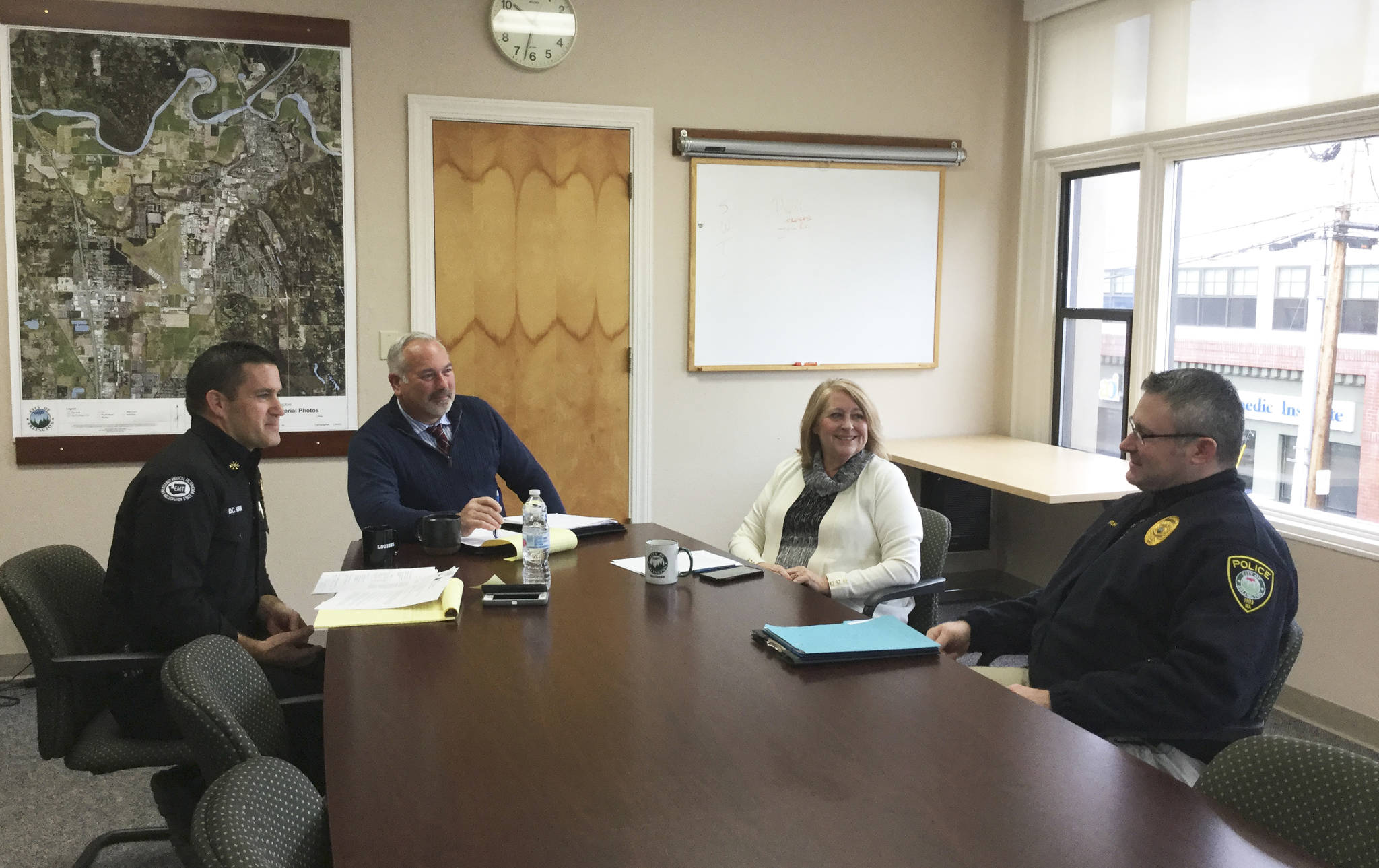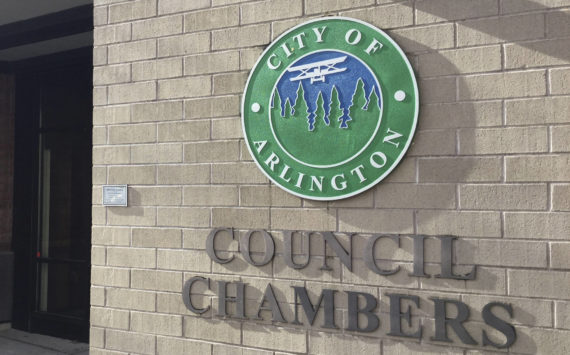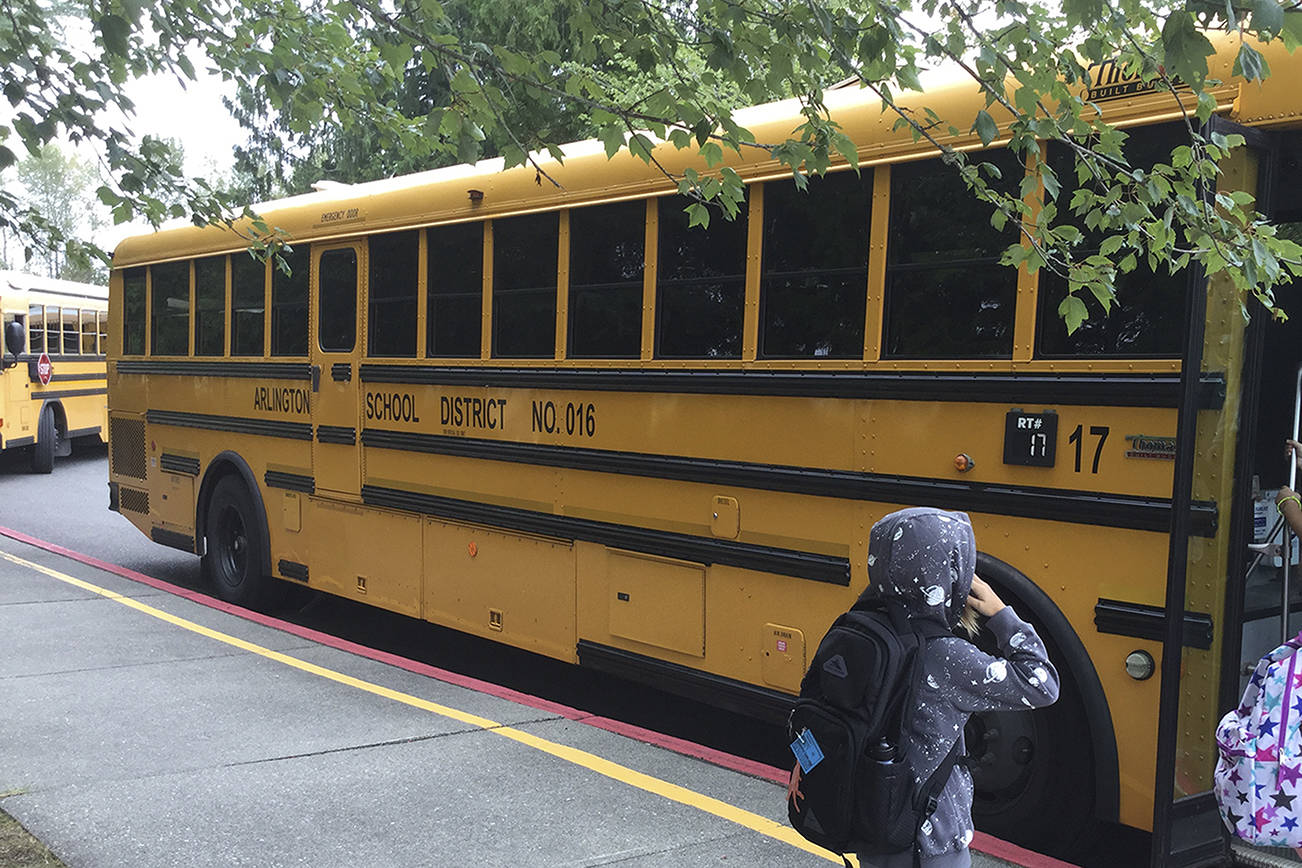ARLINGTON – If the mayor’s confident outlook for Arlington in the new year has a familiar ring to it, that’s because many of the programs and services waiting in the wings that generated talk on the public agenda are ready for action in 2018.
“I’m always optimistic, but there are challenges ahead as well.” Mayor Barb Tolbert said.
In a matter of months, Arlington residents can expect to see changes in the way police deal with the opiate crisis and homelessness, particularly in the Smokey Point area; design standards that will lift the city’s visual appeal; more commercial and residential building activity; and sprucing up some key roadways.
Prominent on the mayor’s agenda is combating the burgeoning opioid and heroin epidemic by deploying embedded social workers with patrol officers – combining enforcement with access to drug and mental health treatment for those ready to get sober.
The social services partnership with Marysville and Snohomish County could hit the streets in March – a regional solution for an overwhelming issue. Tolbert said the opioid crisis is costing local governments significantly, bringing jail overcrowding, causing the degradation of the American family, and taxing medical facilities already in short supply and inadequate services to deal with a problem of this magnitude.
Tolbert has attended meetings with county health and human services staff, and the early results from embedded social worker programs elsewhere are encouraging.
“This is an approach that will take us off the hamster wheel to actually get people help who want services and into clean and sober housing for six months,” Tolbert said. “It’s a real gift and a real pathway for people.”
Through support from the Arlington Family Resource Center, and a flex fund set up for emergency needs that has seen donations increase from the business community, “I have great hopes that we’ll make some headway this year,” Tolbert said.
With Smokey Point businesses bearing the brunt of drug-related crime and homelessness, the cities have established a Lakewood-Smokey Point business committee that met for the first time late last year. The joint committee will be a “direct voice from the city to the businesses, and business to business after that to explain these programs that are coming up,” Tolbert said.
The multi-agency task force overseeing the embedded social work program will meet with the committee this month to talk about how enforcement in Smokey Point will work between the two police departments and the sheriff’s office.
While needs in the Smokey Point are drawing more attention, there are other initiatives that bode well for downtown and Arlington in general.
Recreation Manager Sarah Lopez is now also coordinating economic revitalization efforts. This includes many of the downtown corridor beautification and business education initiatives that were under the America’s Best Communities umbrella in the national competition last year. City officials are reviewing which initiatives to expand on.
For example, the city’s purchase of the “old Shell station” Howell property at Olympic Avenue and 4th Street has the double potential to provide a colorful pocket park blending in with the downtown theme, while the building provides a “makerspace” business incubator program.
The city is surplussing commercial property at Olympic and Division to help cover purchase costs, opening up valuable corner property to new or existing business activity.
The city last month joined the Washington Main Street program. The national program helps communities preserve and revitalize downtowns, while also providing sustainable economic growth and thriving business activity. The Arlington Downtown Business Association and Arlington-Smokey Point Chamber of Commerce will be important partners in taking advantage of the tools, training, resources and networking opportunities that affiliate membership brings.
Tolbert said a city team has come up with design standards for medians and is incorporating irrigation into the landscaping, such as along 67th Avenue NE. Arlington’s gateways are getting a more uniform look, too. “We thought that as we have gateways that need to be developed, we needed to have a set of standards that are affordable on a maintenance scale,” Tolbert said. She added that gateways will be designed to be more upscale, providing the visual appeal the city wants.
Last year took the city’s Arlington Awaits business attraction marketing campaign to lofty heights, stimulating new business arrivals ranging from mom and pop operations and retailers to major aerospace concerns such as Top Cub Aircraft, creating a bridge into China’s fast-growing general aviation market. Arlington saw an 8 percent increase in retail sales tax collections in 2017.
Tolbert said the adoption of mixed use development codes and standards adopted last year will hopefully show first signs of activity in 2018.
The codes give a way to absorb the population increases that city officials know will happen “in a way that doesn’t change the total nature of Arlington, but allows us to build centers within the city so there will be walkable areas of housing and retail, and services, existing within a space.”
Tolbert is eager to see the Puget Sound Regional Council green light designation for the Arlington-Marysville Manufacturing Industrial Center in February. City officials have reviewed the plan, and comments that came back during the public comment period. “We feel very confident that all the good work the staff and elected officials have done on the committees will bode well for the MIC,” the mayor said. Tolbert signed the consultant contract for the master planning, paid for largely through a state economic revitalization grant.
Regarding transportation, city officials are working on infrastructure for 172nd Street NE from Smokey Point Boulevard east to 43th Avenue NE. Improvements would include more signalization and installing medians to create a more predictable traffic flow before the actual expansion portion of the project starts in 2019.
Among key projects, the City Council approved going to bid for the Arlington Valley Road project in January. The project would connect 74th Avenue NE to 191st Place NE, create a more direct route to Highway 9 for businesses along 67th Avenue NE, and serve as a vital three-lane road for commuters and freight accessing industrial areas. Additionally, the city has structured several Transportation Benefit District road preservation and overlay projects to coincide with much-needed utility pipeline work.
In 2018, Arlington will also being working on a Complete Streets program. The effort is a state-approved approach to addressing the needs of all road users, including pedestrians, bicyclists, motorists and transit riders.
Within parks, work will start on a new covered band shell at Legion Park, and city officials hope the state’s Capital Budget opens up to enable construction to go forward on the splash pad at Haller Park.
Tolbert said the city is also purchasing new financial software that hasn’t been upgraded in years. The new system will provide better reporting, data and daily information, and centralized services that should reduce staff time in various departments, while also providing better project tracking across departments.
Early this year, Arlington will also unveil a new interactive, top-of-the-line city website that will give citizens more ways to communicate with the city.
“We’re trying to keep up with how all generations of citizens in Arlington want access to information,” Tolbert said.







